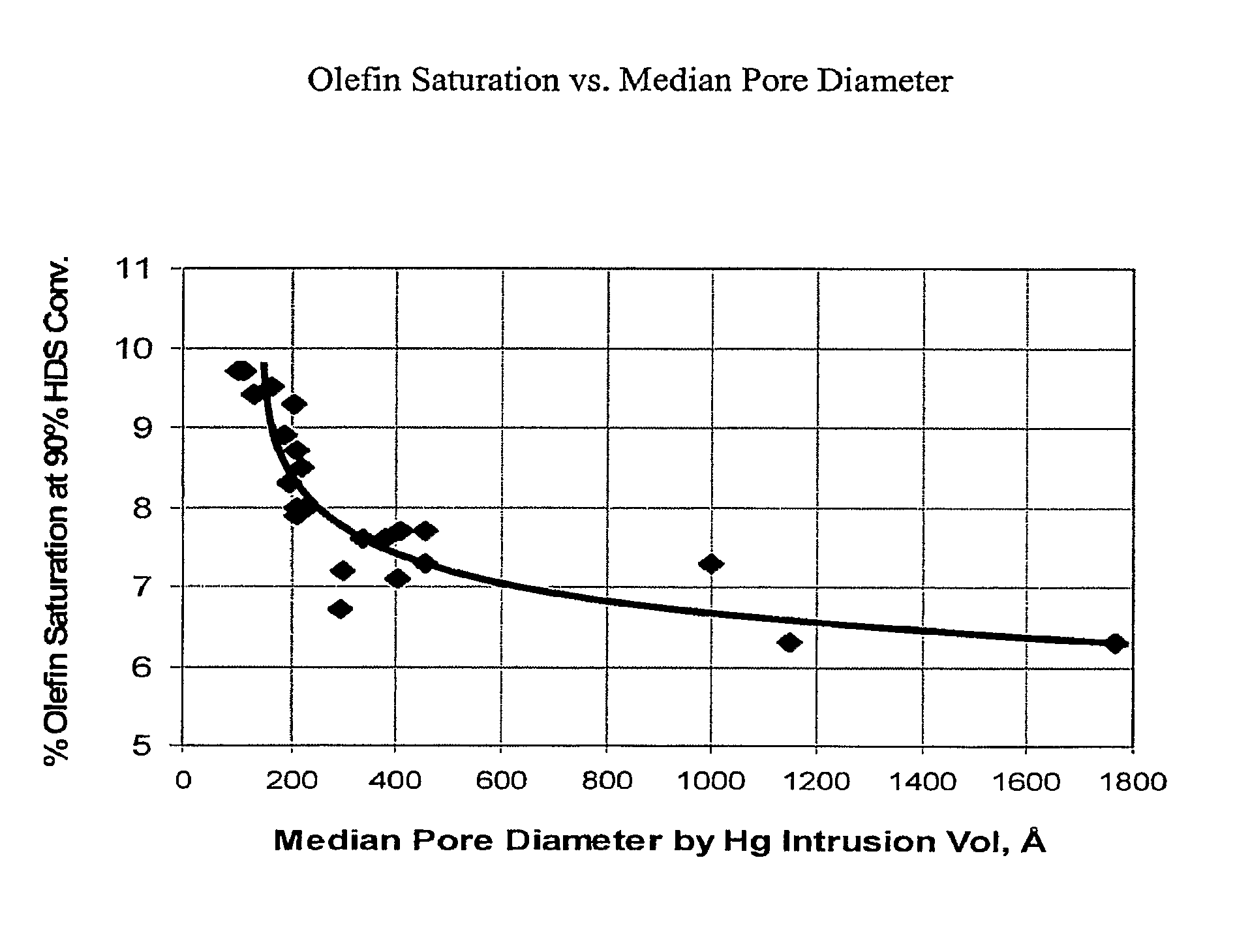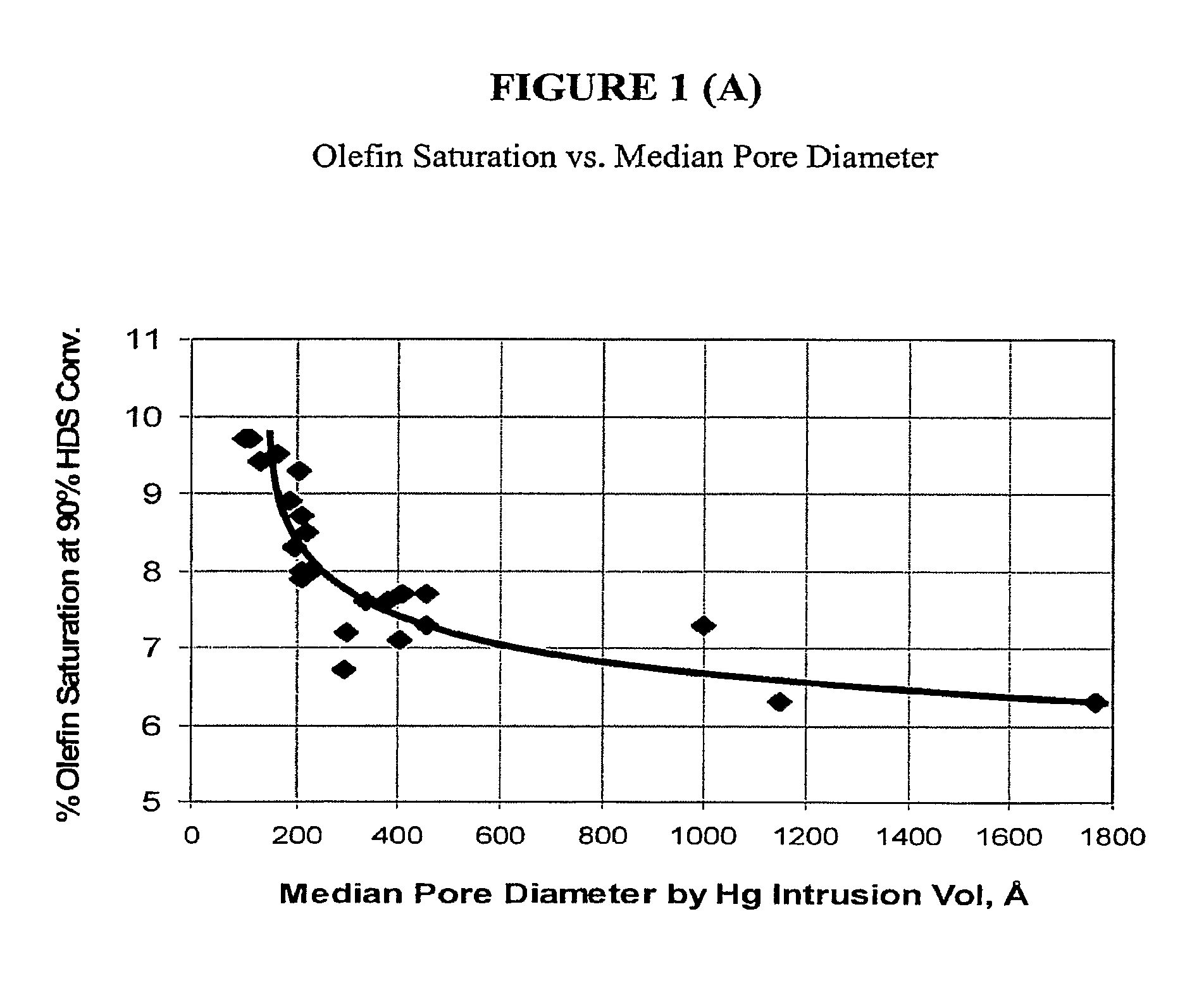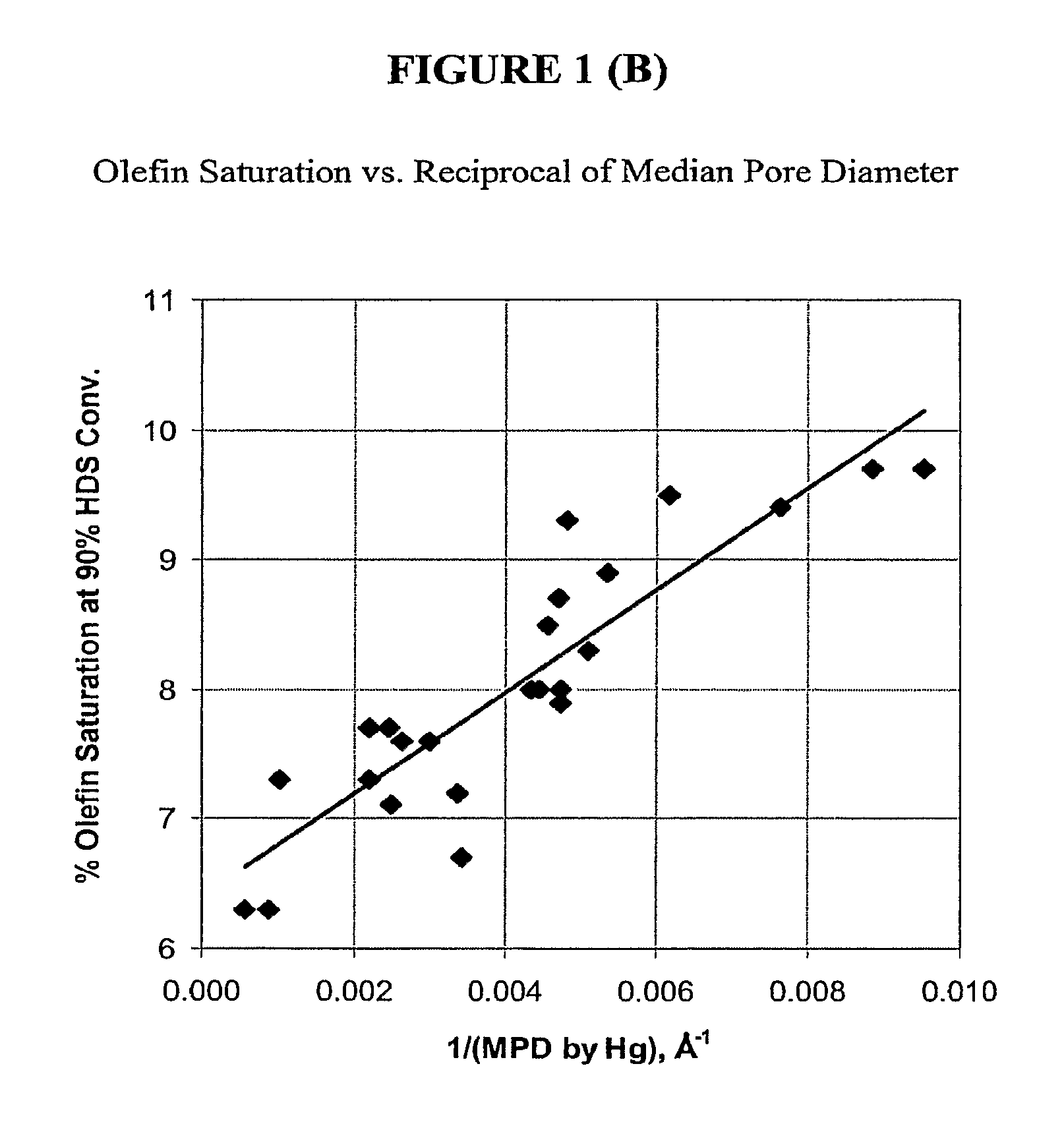Selective catalysts having silica supports for naphtha hydrodesulfurization
a technology of hydrodesulfurization and selective catalysts, which is applied in the direction of hydrocarbon oil treatment products, organic compounds/hydrides/coordination complex catalysts, physical/chemical process catalysts, etc., can solve the problems of significant octane number loss and other problems, and achieve the effect of improving the selectivity towards olefin saturation and high hds of the naphtha feed
- Summary
- Abstract
- Description
- Claims
- Application Information
AI Technical Summary
Benefits of technology
Problems solved by technology
Method used
Image
Examples
example 1
[0037]This example demonstrates an important feature of the subject CoMo supported on SiO2 catalysts which is to maximize the mass transport rate for the HDS reaction; that is, to minimize diffusion limitations for this reaction. For catalyst spheres and extrudates with cross-section diameters of about 1.3 to about 2.4 mm, median pore sizes of about 200 Å to about 2000 Å allows for effective access of naphtha range sulfur containing molecules in and out of the catalyst particles. Reducing the pore sizes of the silica supports leads to diffusion limitations on the HDS reaction, and to more olefin saturation at a given HDS level, as shown in FIG. 1. In FIG. 1a, the Y-axis is the olefin saturation tendency expressed as a percentage of C5 olefin saturation at 90% HDS conversion (both measured on a weight basis), and the X-axis is the median pore diameter in Angstroms, measured by mercury porosimetry, of silica supports of extrudates or spheres with nominal cross-section diameter in the ...
example 2
[0042]The CoMo / silica catalysts were prepared by the incipient wetness technique. A molybdenum urea solution was prepared by dissolving ammonium heptamolybdate tetrahydrate and urea in distilled water and was impregnated on the silica support SC-593 so that the MoO3 concentration on the final catalyst was 21.3 wt. %, based on the weight of the catalyst. The impregnated solid was dried under vacuum at 60° C. Four separate cobalt-organic ligand aqueous solutions were prepared by reacting cobalt carbonate hydrate with citric acid (CoCA), EDTA (CoEDTA), nitrilotriacetic acid (CoNTA), or ethylenediamine (CoEDA). Each cobalt-organic ligand solution was impregnated on the MoUrea / SC-593 so that the CoO concentration on the final catalyst was 5.3 wt. %, based on the weight of the catalyst. The catalysts were dried under vacuum at 60° C.
[0043]The silica supported CoMo catalysts and a commercially available reference CoMo / Al2O3 (SC-154) catalyst were sulfided using 3% H2S in H2 and virgin naph...
example 3
[0044]Three impregnation solutions were prepared by dissolving ammonium heptamolybdate tetrahydrate and cobalt carbonate hydrate with three organic ligands: citric acid (CA), nitrilotriacetic acid (NTA), and arginine (Arg). The cobalt-to-molybdenum atomic ratio was 0.48 in all three solutions. The CoMo-CA solution was impregnated on silica support SC-741 using the incipient wetness impregnation technique in a single step in an amount so that the dried solid would contain 5.85 wt, % CoO and 23.4 wt. % MoO3, based on the weight of the catalyst. The impregnated solid was dried under vacuum at 60° C. The CoMo-NTA solution was also impregnated in a single step and dried under vacuum at 60° C. For the CoMo-Arg solution, the solubility was low and a double impregnation (with a vacuum drying at 60° C. after the first impregnation) was required in order to impregnate a similar amount of CoO (5.83 wt. %) and MoO3 (23.4 wt. %) on the catalyst.
[0045]The catalyst evaluations of the CoMo / SiO2 cat...
PUM
| Property | Measurement | Unit |
|---|---|---|
| temperatures | aaaaa | aaaaa |
| wt. % | aaaaa | aaaaa |
| temperatures | aaaaa | aaaaa |
Abstract
Description
Claims
Application Information
 Login to View More
Login to View More - R&D
- Intellectual Property
- Life Sciences
- Materials
- Tech Scout
- Unparalleled Data Quality
- Higher Quality Content
- 60% Fewer Hallucinations
Browse by: Latest US Patents, China's latest patents, Technical Efficacy Thesaurus, Application Domain, Technology Topic, Popular Technical Reports.
© 2025 PatSnap. All rights reserved.Legal|Privacy policy|Modern Slavery Act Transparency Statement|Sitemap|About US| Contact US: help@patsnap.com



